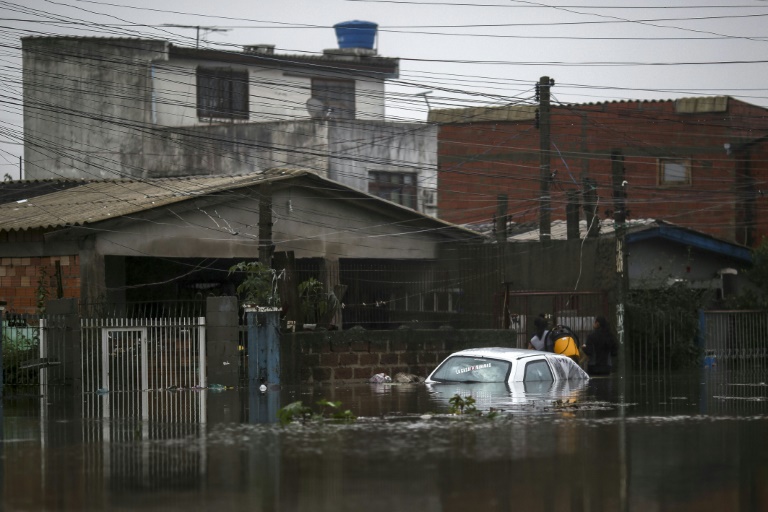When Claudio Almiro finally abandoned his ruined home in flood-ravaged southern Brazil, he found himself slogging through waist-deep water.
The 55-year-old with a grizzled goatee, emaciated face and tired features, took refuge in a cultural center in Gravatai, a northern suburb of Porto Alegre, the capital of Rio Grande do Sul.
He is one of more than 8,000 residents of this state who fled to shelters after abandoning their homes due to the torrential rains that have left some forty people dead and dozens missing.
Almiro, who is unemployed, says the disaster took his home and all his possessions.
“The water kept rising after I left, so… nothing could be saved,” he says.
“Many people have even lost their lives. I raise my hand to heaven and thank God that I’m alive.”
At the Vila dos Anjos cultural center, which is home to around twenty disaster victims, volunteers handed out clothes and toiletries.
Blankets, T-shirts, underwear, flip-flops, toothbrushes: Donations are piled up in the reception room and everything is carefully sorted.
“Take several pairs of socks, because if they get wet, you won’t be able to dry them,” a volunteer tells Almiro.
“There are several places like this in the city to take in disaster victims, but also to receive donations from citizens, which we distribute to those in need,” says Juliano Rocha, head of Gravatai’s social services.
– Fear of more flooding –
The New Horizons shelter, which usually houses the homeless in Gravatai, was also called upon to help.
It improvised to accommodate 51 disaster victims, in addition to the ten regular residents.
“We transformed the meeting room, lounge and dining room into bedrooms. We had to rethink the whole space to cope with this situation, turning everything upside down in just three hours,” social worker Fabiana Moura says.
Next to a bunk bed, Susete Pereira, 39, takes a red blanket from a bag of donations given to her upon arrival. It also contains clothes, sanitary pads and other essentials.
“I think I’ve really lost everything. It’s really desperate,” laments Pereira, her eyes growing moist behind rose-colored glasses.
“I’m afraid of another flood in September, and we haven’t even managed to get back on our feet yet.”
The state of Rio Grande do Sul was also hit by extreme rainfall last year, particularly in September, when a cyclone killed more than thirty people.
fab-lg/tmo/tjj/bfm
